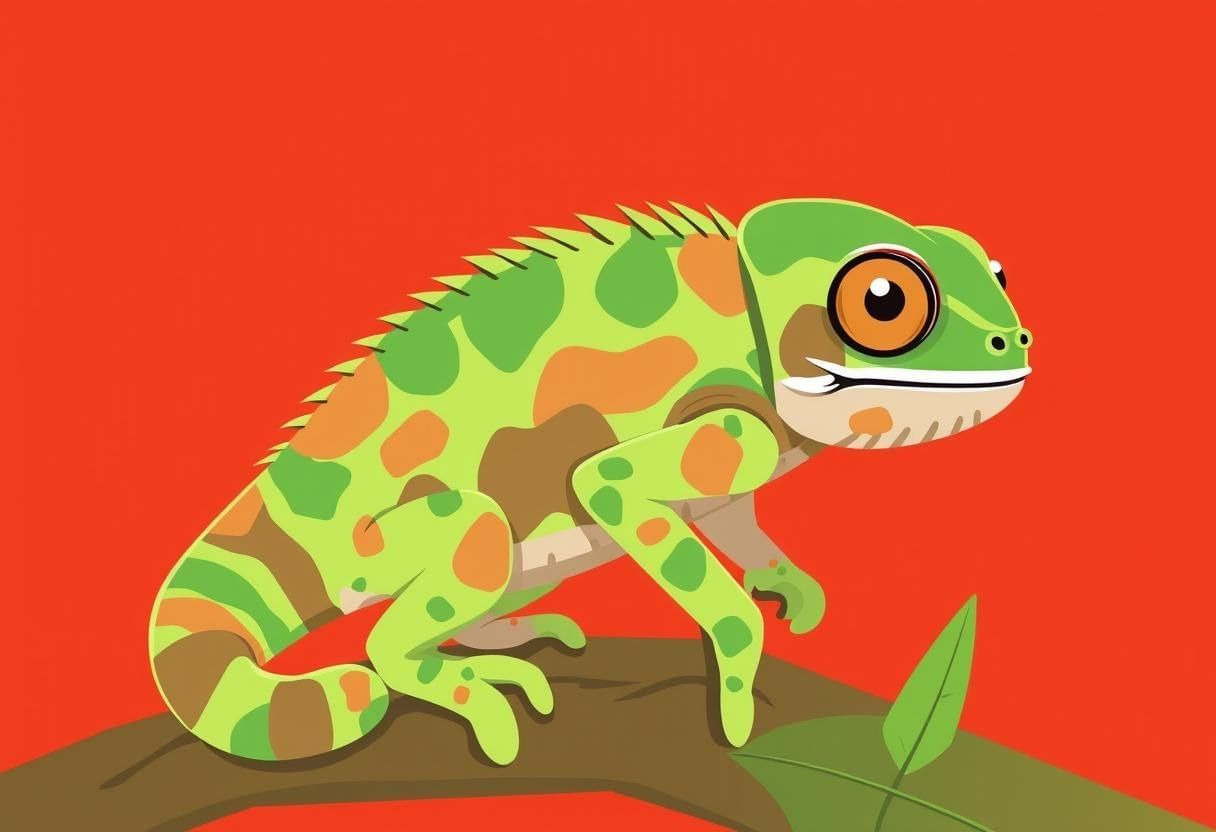Class 10 English First Flight Chapter 4 Previous Year Questions - How to Tell Wild Animals
| Table of contents |

|
| Previous Year Questions 2025 |

|
| Previous Year Questions 2024 |

|
| Previous Year Questions 2023 |

|
| Previous Year Questions 2020 |

|
| Previous Year Questions 2019 |

|
| Previous Year Questions 2015 |

|
Previous Year Questions 2025
Q1: Analyze how Wells employs humour, rhyme, and exaggerated traits to not only entertain, but also educate readers about various wild animals. Explain.
 View Answer
View Answer 
Ans: Wells uses humour, rhyme, and exaggeration to both entertain and teach readers how to identify wild animals.
Humour: Funny and witty descriptions make the poem enjoyable (e.g., the bear’s “hug” being deadly).
Rhyme: The simple AABB rhyme scheme creates rhythm, making the poem easy to read and remember.
Exaggeration: Traits like the leopard “lepping again” or the lion roaring as you’re “dyin’” are exaggerated to make the animals’ features more memorable.
Educational Value: These techniques help readers learn about animals’ appearances and behaviours in a fun, engaging way.
Q2: Mention two points of difference between a Bengal tiger and an Asiatic lion.
 View Answer
View Answer 
Ans:
Appearance: Bengal tiger has a tawny body with black stripes; Asiatic lion is yellowish with a mane.
Behaviour: Tiger attacks swiftly and silently, while the lion’s loud roar warns before attack.
Q3: Why is the term 'bear hug' ironical?
 View Answer
View Answer 
Ans: The term “bear hug” is ironical because it usually means a warm, loving embrace, but in the poem, it describes a bear’s hug that is deadly. This contrast creates humour while reminding readers of the bear’s danger.
Q4: Every creature possesses a unique characteristic that defines it, and this trait is closely linked to its nature. This concept is beautifully illustrated in the poem “How to Tell Wild Animals.” Elucidate.
 View Answer
View Answer 
Ans: The poem shows that every wild animal has a unique feature linked to its nature:
The lion is known for its roar, showing power.
The tiger has stripes and attacks swiftly, showing ferocity.
The leopard leaps repeatedly, showing its aggressiveness.
The crocodile “weeps,” symbolizing false sympathy.
These traits are humorously exaggerated, but they help readers easily remember how to recognize these animals.
Q5: What distinguishes the portrayal of the tiger in the poem 'A Tiger in the Zoo' from the depiction of the tiger in the poem 'How to Tell Wild Animals'?
 View Answer
View Answer 
Ans: In A Tiger in the Zoo, the tiger is portrayed as a caged, frustrated creature, pacing in “quiet rage,” stripped of freedom. In How to Tell Wild Animals, the tiger is a fierce, tawny predator with black stripes, attacking swiftly in its natural habitat. The zoo tiger is subdued, symbolizing lost instincts, while the wild tiger embodies raw power and danger, highlighting the contrast between captivity’s oppression and the majestic freedom of the wild.
Previous Year Questions 2024
Q1: Read the given extracts and answer the questions:
The true Chameleon is small
A lizard sort of thing;
He hasn’t any ears at all,
And not a single wing,
If there is nothing on the tree,
‘Tis the Chameleon you see.
(How To Tell Wild Animals)
(i) Fill in the blank with one word:
When the speaker says “If there is nothing on the tree, ‘Tis the Chameleon you see”, he refers to _____ as characteristic trait of a true Chameleon.
 View Answer
View Answer 
Ans: camouflage (blend in, hide, or disguise)
(ii) What does the speaker mean when he says, “A lizard sort of thing”?
 View Answer
View Answer 
Ans: When the speaker says, “A lizard sort of thing,” he means that a Chameleon is similar in appearance to a lizard. This comparison helps to describe the Chameleon’s physical form in a simple and relatable way.
(iii) Which of the following best describes the speaker’s disposition while describing the Chameleon?
(a) indifferent
(b) playful
(c) dismissive
(d) respectful
 View Answer
View Answer 
Ans: (b) playful
The tone of the poem is light-hearted and humorous, evident in the whimsical descriptions and rhyming structure. The speaker’s playful disposition makes the poem engaging and fun.
(iv) Comment on the poet’s use of language in these lines. Answer in about 40 words.
 View Answer
View Answer 
Ans: The poet’s use of language in these lines is playful and light-hearted. By describing the Chameleon in simple, whimsical terms and using rhymes, the poet makes the description engaging and memorable. This approach captures the reader’s imagination while effectively conveying the Chameleon’s distinctive traits, such as its ability to camouflage.
Previous Year Questions 2023
Q2: Read the following extract and answer the questions that follow: (2023)Or if some time when roaming round,
A noble wild beast greets you,
With black stripes on a yellow ground,
Just notice if he eats you.
This simple rule may help you learn
The Bengal Tiger to discern.
(i) Who is the ‘noble wild beast’ in the above lines?
(a) zebra
(b) Asian Tiger
(c) Asian Lion
(d) Bengal Tiger
 View Answer
View Answer 
Ans: (d)
The phrase "black stripes on a yellow ground" clearly describes the Bengal Tiger.
(ii) Complete the sentence appropriately.
It is clear that 'Alliteration'(repetition of beginning sounds in words) is the poetic devise used for "roaming round' because_____ . (Clue : explain how alliteration applies here)
 View Answer
View Answer 
Ans: It is clear that 'Alliteration' is the poetic device used for "roaming round' because there is a repetition sound of consonant sound 'r'.
(iii) State whether the following statement is True or False:
The extract helps to identify a Royal Bengal Tiger.
 View Answer
View Answer 
Ans: True
The description in the extract is meant to help the reader recognize the Royal Bengal Tiger.
(iv) In the given lines, what effect does the poet create?
'Just notice if he eats you.
This simple rule may help you learn
The Bengal Tiger to discern.'
(a) irony
(b) terror
(c) sympathy
(d) criticism
 View Answer
View Answer 
Ans: (b)
The line "Just notice if he eats you" adds an element of humor mixed with terror, as the poet wryly hints at the danger of encountering a tiger.
(v) Which word in the extract tells you that you have recognised the 'noble beast'?
(a) rule
(b) discern
(c) roaming
(d) notice
 View Answer
View Answer 
Ans: (b)
The word "discern" means to recognize or identify, suggesting that you have successfully identified the Bengal Tiger.
Q3: Read the extract given below and answer the questions that follow: (CBSE 2023)
Though to distinguish beasts of prey
A novice might nonplus,
The crocodiles you always may
Tell from the Hyena thus:
Hyenas come with merry smiles;
But if they weep they’re crocodiles.
(A) Select the appropriate option to complete the sentence, according to the extract:
Crocodiles can be identified by their_____ .
(a) tears
(b) attitude
(c) smiles
(d) attacks
 View Answer
View Answer 
Ans: (a)
The poet humorously states that crocodiles can be identified by their tears, referring to the term "crocodile tears."
(B) State whether the following statement is True or False: Hyenas are famous for weeping.
 View Answer
View Answer 
Ans: False
In the poem, hyenas are described as having "merry smiles," not for weeping.
(C) ‘Novice’ in line 2 means the same as:
(a) learner
(b) beast
(c) tender foot
(d) beginner
 View Answer
View Answer 
Ans: (d)
"Novice" means a beginner or someone new to an activity.
(D) In this extract the poet has presented two different behavioural traits of animals. They are______.
 View Answer
View Answer 
Ans: the weeping of crocodiles while swallowing its prey and laughter of hyenas while attacking its prey.
(E) The post uses ‘A novice might nonplus” instead of the novice might get confused. How does this usage impact the poem?
(a) adds an incorrect option.
(b) it is associated with beasts.
(c) it rhymes and adds humour.
(d) it simplifies the meaning.
 View Answer
View Answer 
Ans: (c)
The word "nonplus" rhymes with "thus" and adds a playful, humorous tone to the poem, which fits the overall style of the poem.
Previous Year Questions 2020
Q4: Why does the poet use the terms ‘noble’ and ‘wild’ for the tiger? (Answer the following questions in 40-50 words) (CBSE 2020) View Answer
View Answer 
Ans: The poet uses the terms ‘noble’ and ‘wild’ for the tiger to create a sense of humour and contradiction. The word ‘noble’ reflects the tiger's status as a royal animal of Bengal, while also highlighting its fierce nature, as it does not treat its prey with humility. Thus, it is truly a wild creature.
Previous Year Questions 2019
Q5: Read the following extract and answer the questions that follow: (AI 2019)If ever you should go by chance
To jungles in the east;
And if there should to you advance
A large and tawny beast,
If he roars at you as you’re dyin'
You’ll know it is the Asian Lion-
(a) Where can one find the Asian Lion?
 View Answer
View Answer 
Ans: The Asian Lion can be found in jungles in the east.
(b) What are the characteristics of the Asian Lion?
 View Answer
View Answer 
Ans: The Asian Lion is a large, tawny beast with a loud roar.
(c) What is the effect of the roar of a lion on you?
 View Answer
View Answer 
Ans: When a lion roars it feels as if we are about to die.
(d) Identify the poem and the poet.
 View Answer
View Answer 
Ans: The name of the poem is 'How to Tell Wild Animals' by Carolyn Wells.
Previous Year Questions 2015
Q6: How can you identify an Asian Lion and a Bengal tiger? (Answer the following questions in 40-50 words) (CBSE 2015) View Answer
View Answer 
Ans: The poet advises that you can identify an Asian Lion when it roars at you, especially when you're in a dangerous situation.
On the other hand, the Bengal tiger is a wild beast of noble appearance. It has black stripes scattered all over his yellow skin. The tiger never gives you a chance to escape if by chance you come in front of him.|
61 videos|617 docs|69 tests
|
FAQs on Class 10 English First Flight Chapter 4 Previous Year Questions - How to Tell Wild Animals
| 1. What are the main characteristics used to identify wild animals in "How to Tell Wild Animals"? |  |
| 2. What is the theme of the poem "How to Tell Wild Animals"? |  |
| 3. Which animals are mentioned in "How to Tell Wild Animals"? |  |
| 4. How does the author use humor in "How to Tell Wild Animals"? |  |
| 5. What literary devices are used in "How to Tell Wild Animals"? |  |
















